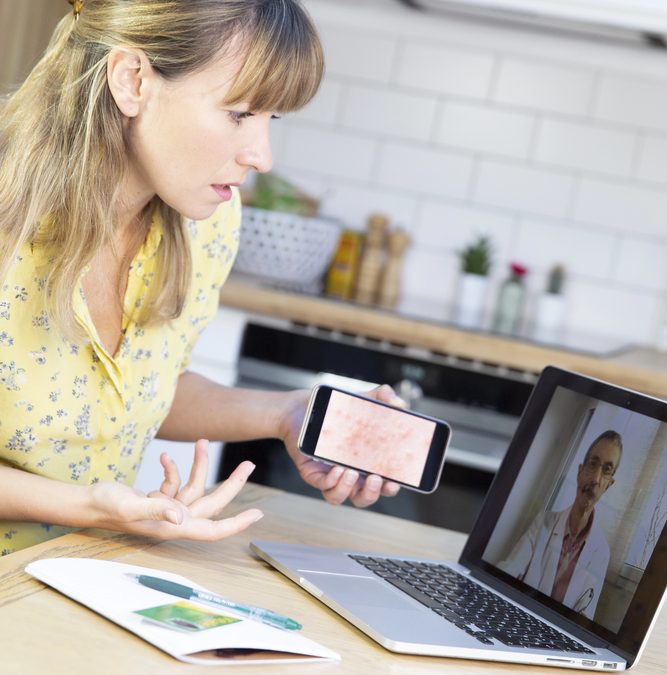Have you ever skipped a doctor’s visit because it just felt like too much? The drive, the waiting room, the awkward small talk, the cost—it can be a hassle. You’re not alone. Over the last few years, especially since COVID, more people have turned to telehealth for care that is easier to access and less stressful. And it’s not just a temporary shift. Virtual care is changing the way we think about wellness.
Telehealth used to be something people used in emergencies or as a last resort. But now, it’s becoming a go-to choice for everything from therapy to check-ups. (There are even veterinarians offering tele-health visits for your pets now!) The technology is improving. Patients are more comfortable. Providers are adapting. And the results are promising. This shift isn’t just about convenience—it’s about better access, better follow-up, and more consistent care.
More Access, More Flexibility: Why Telehealth Works
One of the biggest reasons telehealth is growing so fast? It meets people where they are. You don’t need to take time off work or arrange child care just to talk to your doctor. You don’t have to drive across town—or across counties—especially if you live in a rural area with limited providers. You just log in, talk, and go back to your day.
This kind of flexibility is huge for people with ongoing conditions like diabetes or high blood pressure. It’s also making a difference in mental health care, where more patients are now getting regular therapy from home. For many, the comfort of being in a familiar space helps them open up and stick with treatment.
Another reason this works so well is compact license nursing. Nurses with a compact license can work across multiple states without needing separate licenses for each one. That means more nurses can serve more patients, no matter where they live. It’s especially useful in telehealth, where a nurse in Florida might be helping someone in Georgia or Texas, all without legal issues getting in the way. That means more licensed professionals, more care options, and smoother access for all.
How Patients Are Embracing Virtual Wellness
Telehealth isn’t just about seeing your doctor online. It’s becoming part of everyday wellness. People now turn to virtual visits for therapy, nutrition coaching, birth control consults, and even physical therapy check-ins. Some clinics have apps that remind you to take your meds or log how you’re feeling. It’s health care that fits into real life.
What’s also changed is how comfortable patients are with this kind of care. A few years ago, people worried about talking to someone on a screen. Would it feel awkward? Would the care be the same? But after a few visits, most find it’s actually easier. (I use telehealth visits for managing menopause symptoms.) There’s no rush. You’re not sitting in a waiting room wondering when your name will be called. You’re home. It feels normal now—and for many, better.
This comfort is helping people be more open. When patients feel relaxed, they’re more likely to ask questions or share what’s really going on. That leads to better care and better outcomes.
What Providers Are Doing Differently in a Virtual World
Healthcare professionals have had to make some changes, too. Doctors and nurses now spend more time preparing for virtual visits. They learn how to speak clearly, explain things simply, and make sure patients understand what to do next. It’s a different skill set, but one that improves communication overall.
Many clinics have added new tools to help with remote care. Patients can use at-home blood pressure monitors, thermometers, or even digital stethoscopes. The results can be shared in real time, which helps providers make better decisions. And with health data being tracked digitally, providers can spot patterns that might be missed in a one-off visit.
Virtual visits also let nurses and doctors check in more often without overwhelming their schedules. A 10-minute follow-up call can catch issues early, keep patients on track, and avoid unnecessary hospital visits. It’s small, simple care that adds up.
Challenges That Still Need Attention
Of course, telehealth isn’t perfect. There are still a few bumps to work through.
Technology is one of the biggest ones. Not everyone has a strong internet connection or a working camera. Some people aren’t comfortable using video or navigating a healthcare app. That’s especially true for older adults or people in low-income areas.
Privacy is another concern. People want to know that their health information is safe. While most platforms use secure systems, patients need to feel confident using them. That means providers need to explain how privacy is protected in clear, simple language.
There’s also a learning curve for both patients and providers. Some doctors have had to adjust their routines to make space for virtual care. Patients may need a bit of help setting things up or knowing what to expect. But with a little effort on both sides, these gaps can be filled.
What the Future of Telehealth Could Look Like
So what’s next? A lot, actually.
We’re already seeing more clinics offer hybrid care—a mix of in-person and virtual visits. You might see your doctor in the office once a year, then check in online every few months. It’s a flexible system that gives you support without the stress.
There’s also growing use of AI tools that help track patient progress and send reminders. These tools don’t replace care—they support it. Imagine getting a gentle nudge to refill your prescription or schedule a follow-up when your symptoms change. That’s where things are headed.
We’ll also likely see more nurses and wellness coaches working remotely. Some may even lead virtual group sessions on topics like stress, sleep, or managing chronic illness (I might even consider doing this!). These programs help build a sense of community while making expert advice easier to access.
Telehealth is no longer a backup plan—it’s becoming part of how we stay well. It brings care closer to home, makes life easier for busy people, and opens doors for those who’ve been left out. It’s not perfect, but it’s improving every day.
If you haven’t tried virtual care yet, it might be time. Whether it’s a quick check-up, a therapy session, or advice about something small, telehealth can help you feel supported, without turning your schedule upside down. And as it keeps growing, it’ll only get better at fitting into your life.
When care becomes more accessible, staying well becomes a little easier. And that’s a future worth looking forward to.
LEARN TO LOVE YOUR LIFE AGAIN
 Do you feel like you need to hit the REFRESH button on your life? Download our free guide and begin to create your best life yet!
Do you feel like you need to hit the REFRESH button on your life? Download our free guide and begin to create your best life yet!



